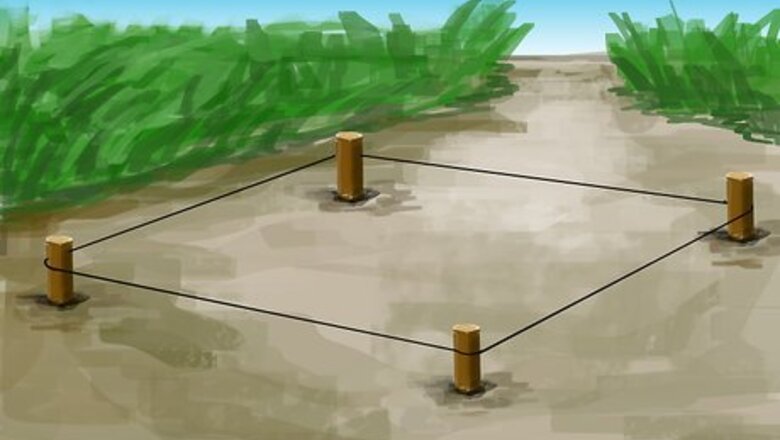
views
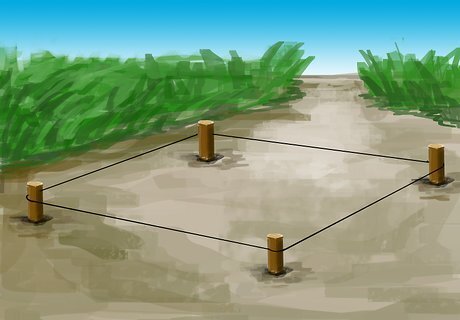
Lay out the corner positions of the slab using stakes and string lines. A builder's level is ideal for establishing the grade of the top of concrete, but an inexpensive line level will give decent results on short spans.

Measure diagonally on square and rectangular slabs from corner to corner, shifting parallel sides until the diagonal measurements are equal, while the lengths of the sides remain the desired widths. For simple shapes and small size slabs, this "working line" is sufficient, but for complex shapes and large critical layouts, "batter boards" should be used so that the established building lines will be available to recheck layout as forming progresses.
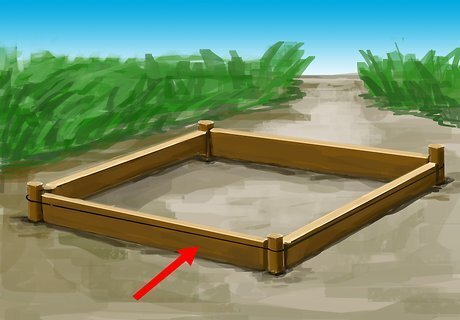
Place the form board starting at one corner alongside the string line, staking it down about ⁄8 inch (0.3 cm) from the line with sharpened wood stakes. The thickness of the slab will determine the spacing of the stakes, as well as the nominal dimension of the forming lumber. As an example, a 1X4 pine board is usually stiff enough to support a 4 inch (10.2 cm) concrete placement (pour), where an 8 to 12 inch (20.3 to 30.5 cm) slab thickness will require 2 inch (5.1 cm) dimension lumber of a width equal to the height. To insure ease of forming, select straight, flat lumber with minimal knots at the lumberyard.
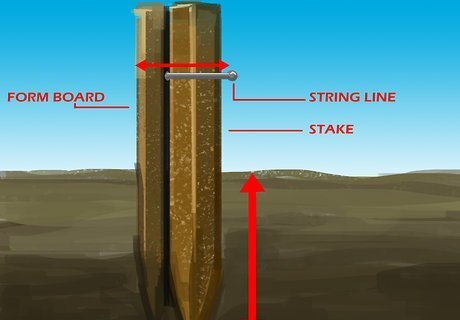
Stake 4 inch (10.2 cm) slabs a minimum of 32 inches (81.3 cm) on center, and deep enough to firmly support the form, depending on the stability of the soil beneath the form. For thicker slabs, decrease your stake spacing, a 12 inch (30.5 cm) slab will need to be staked no more than 24 inches (61.0 cm) on center. Nail the forms to the stakes level with and almost touching the string line.
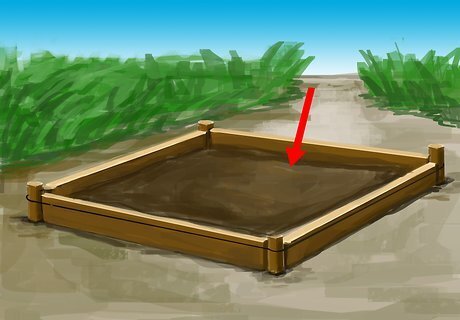
Pack the soil around the stakes to lean the form in or out if needed to align it with the string line, and if it is necessary, place a gauge block to hold the string clear of the form and gauge the form at frequent intervals to assure the form is straight.
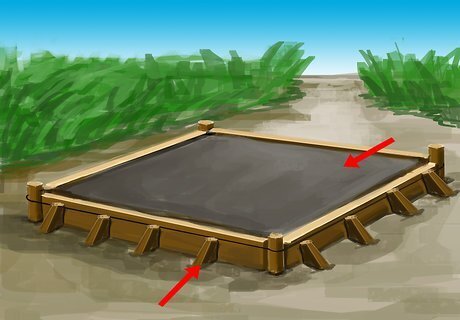
Drive another row of stakes behind the form 2 to 3 feet (0.6 to 0.9 m) for thicker slabs, and nail a kicker, or 2x4 board from the offset stake to the side of the stake nailed to the form to keep it stable. When placing the concrete, you may want to restring each side to make sure the weight of the concrete hasn't bowed the form, and these stakes can be wedged out to correct any bows.


















Comments
0 comment